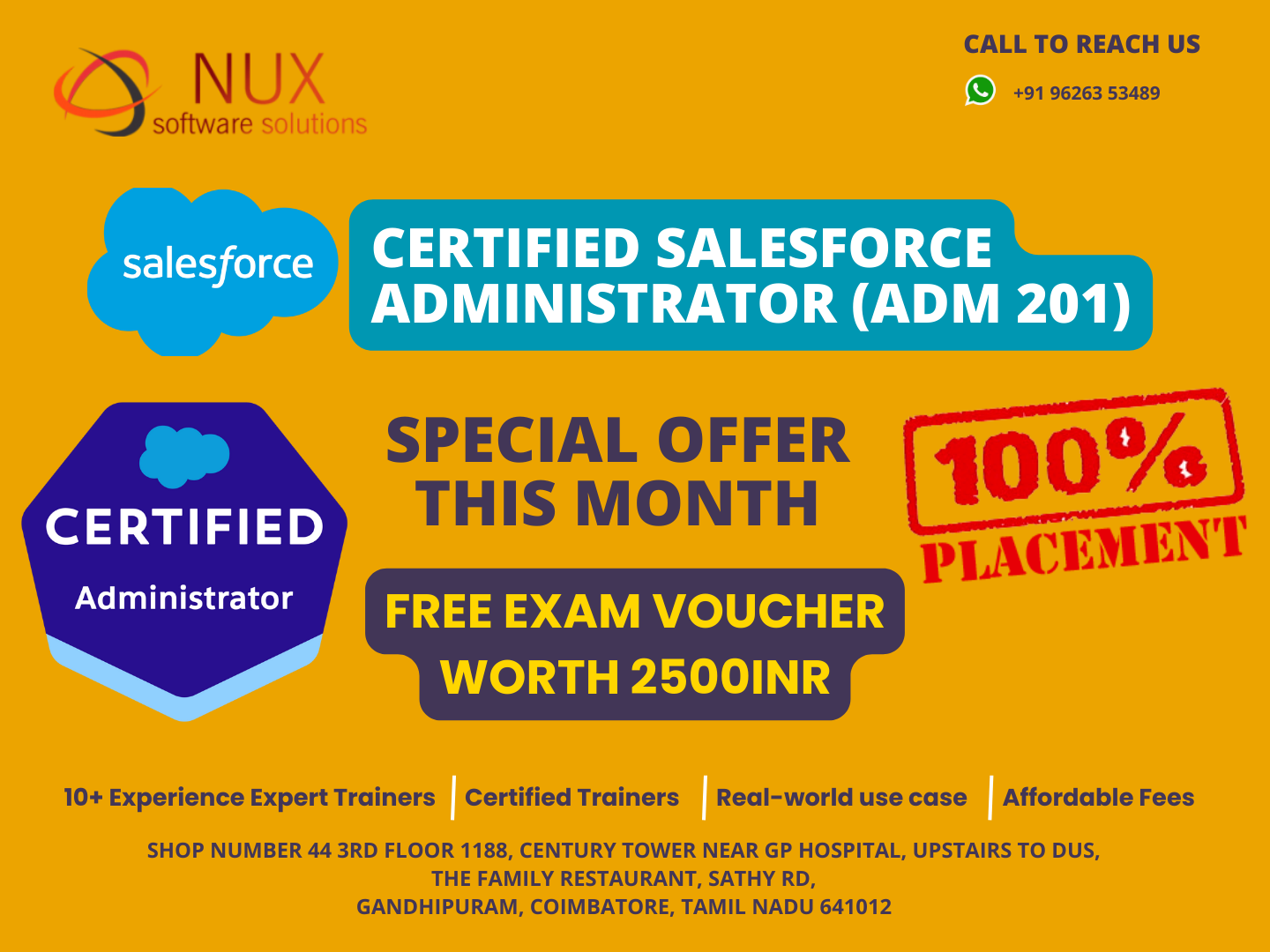Certified Salesforce Administrator (ADM 201)


Best Certified Salesforce Administrator (ADM 201) training courses classes deliver by Nux software solutions in coimbatore. Nux software solutions in coimbatore has excellent and advanced training programs that will give you better performance & hands on experience. Our industry’s expert trainers offer a wide range of skills and experience in their graded areas.
The Training center environment is too good for professional, individual, corporate, live project training and industrial training. Labs infrastructure is advanced, well managed and you can access LAB 24X7 from anywhere. Training center has international expert trainers and they have excellent knowledge, real time industry experience.
Our Training programs combine with several innovative learning methods and delivery models. We understand your requirement and it will give you 100 percent growth for your career and provide the cost effective training programs and also work with flexibility for the trainees.
The Salesforce Administrator credential is designed for those who have experience with Salesforce and continuously look for ways to assist their companies in getting even more from additional features and capabilities.
Course Syllabus
Configuration and Setup: 20%
- Describe the information found in the company settings (for example: company settings fiscal year, business hours, currency management, default settings).
- Distinguish and understand the administration of declarative configuration of the user interface (for example: UI settings, app menu, list views, global actions, Lightning App Builder).
- Given a scenario, demonstrate the proper setup and maintenance of users.
- Explain the various organization Security Controls (for example: Setup Audit Trail, Login Hours, Session Settings).
- Given a user request scenario, apply the appropriate security controls based on the features and capabilities of the Salesforce sharing model (for example: public groups, org wide default, sharing: roles, subordinates, hierarchy, report and dashboard folders).
- Given a scenario, determine the appropriate use of a custom profile or permission set using the various profile settings and permissions.
Object Manager and Lightning App Builder: 20%
- Describe the standard object architecture and relationship model (for example: standard object, parent/child, master detail/lookup/junction relationships, and record types).
- Explain how to create, delete, and customize fields and page layouts on standard and custom objects, and know the implications of deleting fields.
- Given a scenario, determine how to create and assign page layouts, record types, and business processes for custom and standard objects.
Sales and Marketing Applications: 12%
- Given a scenario, identify the capabilities and implications of the sales process (for example: sales process, opportunity, path, and forecast impact).
- Given a scenario, apply the appropriate sales productivity features using opportunity tools (for example: dashboards, lead scoring, Einstein opportunity scoring, and home page assistant).
- Describe the capabilities of lead automation tools and campaign management (for example: leads, lead convert, lead assignment rules, campaign and campaign members).
Service and Support Applications: 11%
- Describe the capabilities of case management (for example: case, case assignment rules, and queues).
- Given a scenario, identify how to automate case management (for example: support process, case auto-response rules, and case escalation).
Productivity and Collaboration: 7%
- Describe the capabilities of activity management.
- Describe the features of Chatter.
- Describe the capabilities of Salesforce Mobile App.
- Identify use cases for AppExchange applications.
Data and Analytics Management: 14%
- Describe the considerations when importing, updating, transferring, mass deleting, exporting, and backing up data.
- Describe the capabilities and implications of data validation tools.
- Describe the options available when creating or customizing a report or report type.
- Describe the impact of the sharing model on reports.
- Describe the options available when creating and modifying dashboards (for example, dashboard components, data sources, chart types, Subscribing, running user).
Workflow/Process Automation: 16%
- Given a scenario, identify the appropriate automation solution based on the capabilities of the tool.
- Describe capabilities and use cases for Flow.
- Describe capabilities and use cases for the approval process.



